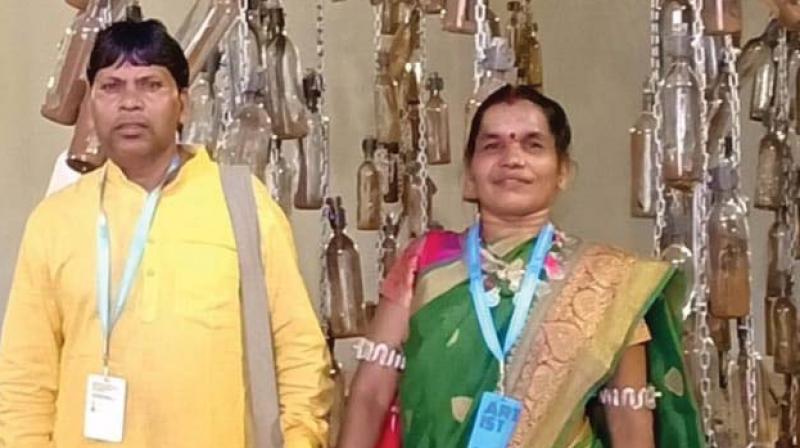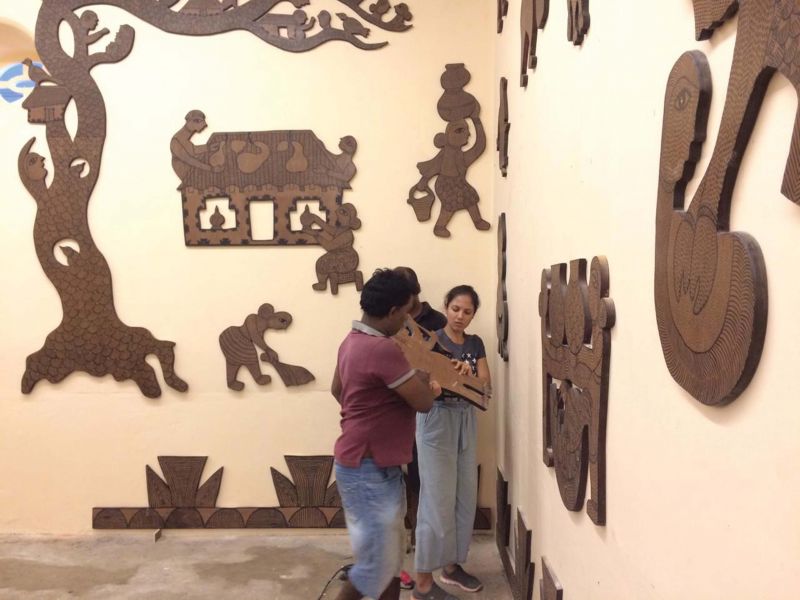Taking heritage forward

As you enter Aspinwall in Fort Kochi, one of the Kochi Muziris Biennale venues, what awaits you in the first room is the story of a precious girl — Dus Motin Kanya and Jal Devata painted by artist couple Durgabai Vyam and Subhash Vyam from Madhya Pradesh. Done in the traditional gond style, the story covers the walls and pillars of the room in the form of small wooden blocks with images on them. The couple and their son stand in the room observing visitors. “The entire artwork is a depiction of an old story that has been passed down to generations, just like the technique. My parents learned the style from their elders, and I, from them,” says Mansingh Vyam, their son, who is also an artist.
Dus Motin Kanya chronicles various incidents from the girl’s birth till her marriage. It goes like this: the girl, who has five brothers, is considered as a precious jewel by her family. Hence, her parents do not allow her to go outside the home. As they are about to die, the parents entrust the five brothers to guard their sister. They tell them not to send her outside. As time passes, brothers get married. One day, they go to a faraway place for work and ask their wives to take care of the sister. Wives agree, but they get tired of it overtime and start mistreating the girl. They even plot to kill her and push her into the well. However, she is saved by a bird. By then brothers happen to know about the viciousness of their wives and save their sister.

Later, one day while she takes bath in a river, a snake sees her. Impressed by her beauty, the snake tells its master about the girl. The master falls in love with the girl once he sees her, and expresses his desire to marry her. However, the girl’s family is against the alliance. Angered, the snake’s master dries up all rivers and wells in the village, and says he will return water only if the family marries off her to him. Eventually, the family conducts the marriage and the village flourishes again.
“In the story, the girl is treated as a goddess,” says Nishi, a volunteer who has helped the couple in painting. The Vyam couple took almost three months to complete this work. The features of characters and styles are quite similar to the Kerala mural style. The only exception might be the lack of bright shades. Wooden brown and black are the two prominent colours. “The gond art can be called the mural art of Madhya Pradesh,” says Nishi. “Usually, they do it on paper or canvas. For the biennale, they have experimented with the medium. They painted the images that carry all elements of nature on marine plywood. First, they did the sketch on walls, and then cut the wooden pieces into those shapes, plastered them on the walls and painted them in acrylic,” she adds.
The work is on display till March 29.

